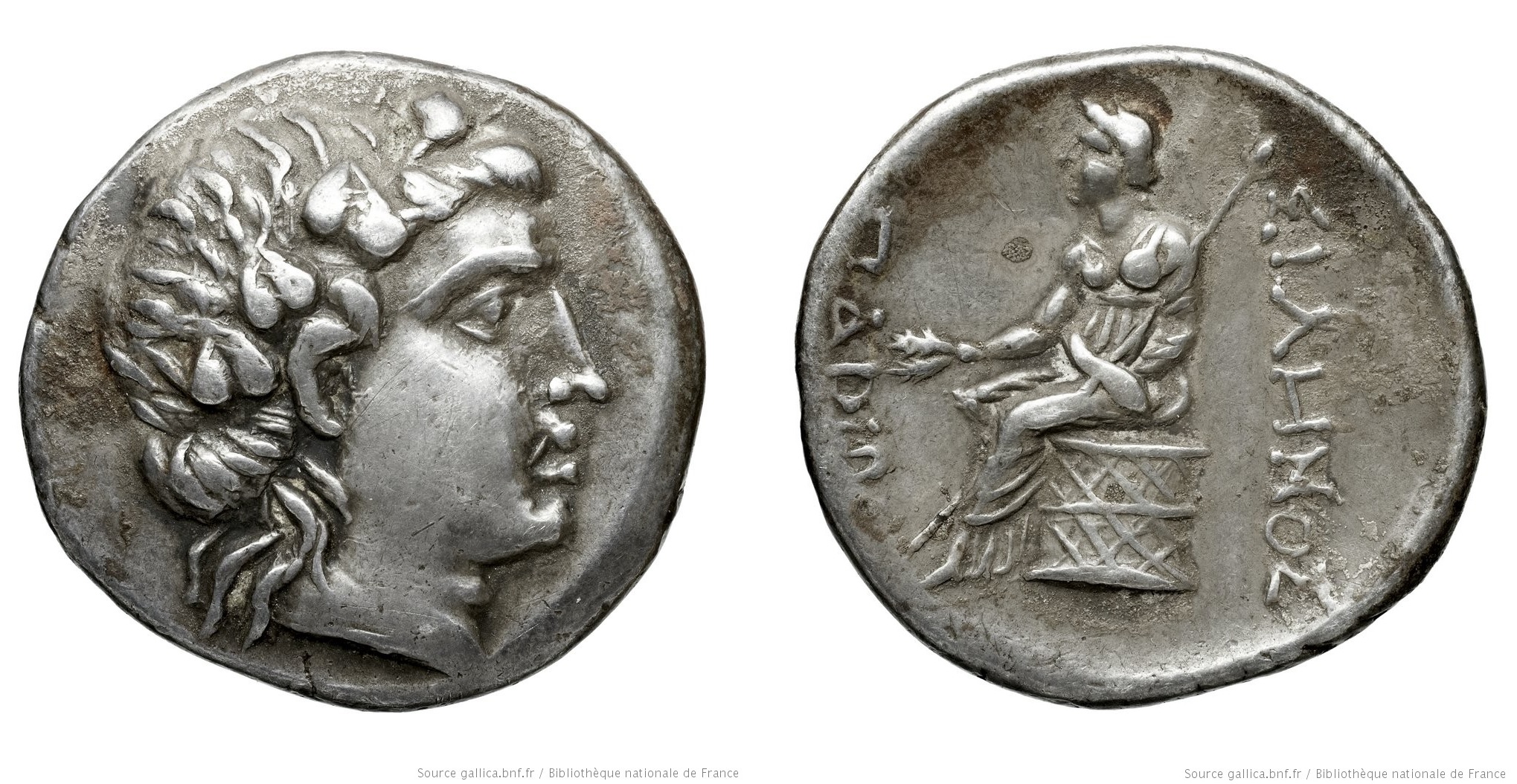S 693 - Paros, silver, tetradrachms (300-175 BCE)
From SILVER
300 BCE - 175 BCE Silver 1,401 kg
Description
| ObverseInscription or printing placed on the obverse.: | Young head of Dionysus right, crowned with ivy. |
| ReverseInscription or printing placed on the reverse.: | ΠΑΡI (T1) ; ΠΑΡIΩN (T2); ΣΙΛΗΝΟΣ (Greek).Demeter seated left on cistus, holding wheat ears in right hand and scepter in left hand |
Mint and issuing power
| MintIdentifies the place of manufacture or issue of a numismatic object.: | Paros | Ancient regionAncient region.: | Cyclades | Modern countryModern country: Greece | AuthorityIdentifies the issuing power. The authority can be "pretended" when the name or the portrait of X is on the coin but he/she was not the issuing power. It can also be "uncertain" when there is no mention of X on the coin but he/she was the issuing power according to the historical sources: |
Chronology
| FromIdentifies the initial date in a range assigned in a numismatic context. | 300 BCE | toIdentifies the final date in a range assigned in a numismatic context.. | 175 BCE | PeriodTime period of the numismatic object.: Hellenistic 323-30 BC |
Physical description
| MetalThe physical material (usually metal) from which an object is made.: | Silver |
Median weightMedian of the weights of numismatic objects (in grams). in grams | 15.60 | DenominationTerm indicating the value of a numismatic object. Examples: tetradrachm, chalkous, denarius.: | tetradrachm |
StandardStandard.: |
Image

S 693 Paros Tetradrachm 300-175.jpg [1]
References
| Die study referencePublication of the study: | Tully 20131Tully 2013, p. 75-77, series T1 and T2A-B. | ||
| Coin series referenceReference to coin series study: | |||
| Coin series web referenceCoin series web references: | |||
Obverse dies distribution
| FrequencyFrequency of specimen in distribution. ᵖ | Number of obversesNumber of obverse dies. ᵖ (o) | % (o) | Number of coinsNumber of coins. (n) | % (n) | Die nameName(s) of the die(s). |
| 1 | 1 | 25 | 1 | 5.26 | 1 (T1) |
| 3 | 1 | 25 | 3 | 15.79 | 1 (T2) |
| 5 | 1 | 25 | 5 | 26.32 | 3 (T2) |
| 10 | 1 | 25 | 10 | 52.63 | 2 (T2) |
| Total | 4 of 4 | 100 | 19 of 19 | 100 |
Reverse dies distribution
no distribution is available
Quantification
| Number of obversesNumber of obverse dies. ᵖ (o) | 4 | Number of singletons (o1)The number of singleton coins. ᵖ | 1 |
| Number of reverse diesNumber of reverse dies. (r) | 9 | Number of coinsNumber of coins. (n) | 19 |
| Coins per obverse dieNumber of coins per obverse die. (n/o) | 4.75 | Coins per reverse dieNumber of coins per reverse die. (n/r) | 2.11 |
| Reverse per obverse ratioRatio of obverse dies divided by reverse dies. (r/o) | 2.25 | Percentage of singletons (o1)number of coins (n) divided by the number of singletons (o1) ᵖ | 25 % |
| Original number of dies (O) (Carter 1983 formula)The estimation of the number of coins according to Carter 1983 ᵖ | 4.49 | Coins struck if 20,000 as average productivity per dieCoins made if the average productivity for obverses (according to Carter) is 20,000. ᵖ | 89,800 |
| Original number of dies (O) (Esty 2011 formula)The estimation of the number of coins according to the singleton formula in Esty 2011 ᵖ (O) | 5.07 | Survival rate if 20,000 as average productivity per dieSurvival rate if average productivity is 20,000. ᵖ | 0.00021 |
| Coverage (o = % of O) (Esty 1984 formula)Esty 1984 - coverage (% of O) ᵖ (o = % of O) | 94.74% | Die productivity if survival rate 1/2,000Average productivity if survival rate is 1/2,000. ᵖ | 8,463.25 |
| Weight of silver (in kg) if 20,000 coins per die (O = Carter formula)Carter 1983 * Median weight * 20000 (*10 if gold or electrum) ᵖ | 1,401 kg <br /> 1,401 kg | Die productivity if survival rate 1/5,000Average productivity if survival rate is 1/5,000. ᵖ | 21,158.13 |
Remarks